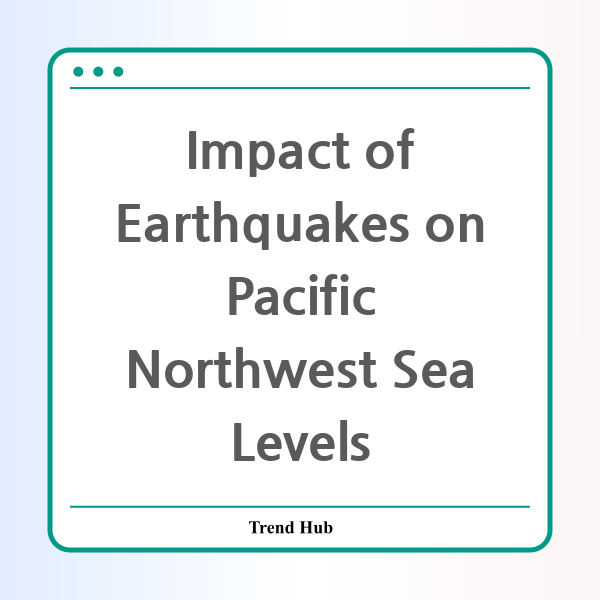* This website participates in the Amazon Affiliate Program and earns from qualifying purchases.

Have you ever thought about how a massive earthquake could reshape our coastlines and communities in the Pacific Northwest? Recent studies indicate that the impact of a powerful earthquake along the Cascadia Subduction Zone could be unprecedented, dramatically transforming the landscape and increasing the risk of flooding in the region. Let's dive into the startling findings of these studies about earthquake risks and their implications on sea levels.
The Cascadia Subduction Zone, a region spanning from Northern California to Canada’s Vancouver Island, is known for its seismic activity. Research indicates a 15% likelihood of an earthquake exceeding a magnitude of 8.0 within the next 50 years. When such a quake strikes, it could lead to rapid land subsidence—where the ground sinks and triggers a swift rise in sea levels, posing significant challenges to coastal communities.
According to a recent study published in the Proceedings of the National Academy of Sciences, a major earthquake could cause areas along the coast to sink by up to six feet. This drastic land subsidence could expand the coastal floodplain considerably, drastically increasing flood risks in densely populated areas, particularly in southern Washington, northern Oregon, and northern California. The repercussions, as experts suggest, could be felt for decades or even centuries, as these sudden changes to the coastline could render some low-lying areas uninhabitable.
Using historical context, the last great temblor in this area occurred in January 1700, causing a rapid rise in sea level and unleashing devastating tsunamis, with impacts visible even as far as Japan. If a similar event were to occur today, the consequences could be catastrophic, with estimates suggesting over 30,000 potential fatalities and economic damages exceeding $81 billion. This stark reality is made more formidable by the fact that, as climate change continues to raise sea levels gradually, the combination of such an earthquake with rising water levels could lead to flood risks that are three times higher by the year 2100.
What does this mean for residents and decision-makers in the Pacific Northwest? The implications are profound. As scientific insights continue to unravel the potential hazards of the Cascadia fault line, preparedness must evolve. Communities should prioritize resilience planning—an approach that incorporates these imminent risks when designing infrastructure, roads, and emergency evacuation protocols. Strategies must consider not only immediate earthquake-induced threats but also the long-term effects of climate-driven sea-level rise.
Experts urge that public awareness and preparedness are paramount. As lead researcher Tina Dura emphasizes, communities must not overlook these substantial risks that could redefine their living conditions overnight. It’s essential for residents to engage with tsunami evacuation planning and recognize the gravity of potential future earthquakes. Local governments should also take proactive steps, including reassessing infrastructure locations such as airports, wastewater treatments, and agricultural lands to ensure safety and sustainability amidst these looming threats.
In conclusion, as the Pacific Northwest braces for the possibility of a significant seismic event, understanding the full scope of its potential impacts on sea levels and community safety is crucial. The time to prepare is now—by raising awareness, reinforcing infrastructure, and planning for both seismic and climate-related challenges, we can work towards minimizing loss of life and property. Stay informed and be proactive to help secure a safer future for our coastal communities.
* This website participates in the Amazon Affiliate Program and earns from qualifying purchases.